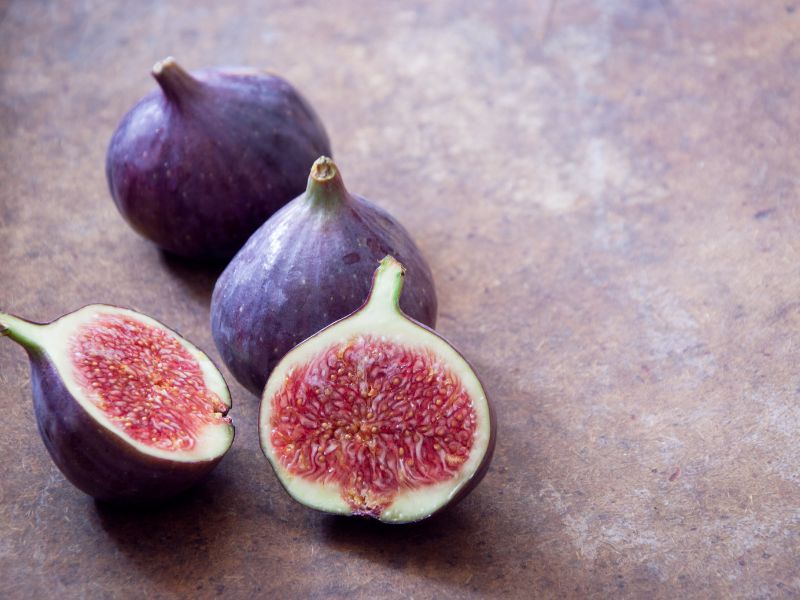Figs are a popular fruit that are enjoyed by many. They are versatile and can be used in a variety of dishes, such as salads, desserts, and even as a pizza topping. However, figs have a short shelf life and can quickly spoil. This leads to the question, can you freeze figs?
Benefits of Freezing Figs
The answer is yes, you can freeze figs. Freezing figs is a great way to preserve them for future use. This is especially useful if you have a large number of figs that you are unable to use immediately. Freezing figs can also help to retain their nutrients and flavor.
When figs are frozen, the freezing process helps to stop any further ripening, which can cause the figs to spoil. This helps to preserve their nutrients and ensure that they are still full of flavor when they are used in the future.
How to Prepare Figs for Freezing
Before freezing figs, it is important to prepare them correctly. This will help to ensure that they freeze properly and can be used in the future. Here are the steps to follow:
Selecting Ripe Figs
The first step is to select ripe figs. Look for figs that are firm but slightly soft to the touch. They should also have a vibrant color and no visible signs of damage or decay.
Cleaning and Drying Figs
Once you have selected your figs, the next step is to clean and dry them. Rinse the figs under cold water and gently pat them dry with a clean towel. This will remove any dirt or debris from the surface of the figs.
Slicing Figs
The final step in preparing figs for freezing is to slice them. Cut the figs into quarters or slices, depending on how you plan to use them in the future. This will help to ensure that the figs freeze evenly and can be easily used in recipes later on.
Freezing Figs
Once you have prepared your figs, it is time to freeze them. There are a few different options for freezing figs, including:
Freezing Figs Whole
If you plan to use the figs in their entirety in the future, you can freeze them whole. Place the figs on a baking sheet and freeze them for a few hours until they are firm. Once they are firm, transfer the figs to a freezer-safe container or bag and return them to the freezer. This will help to prevent them from sticking together and make it easier to use them in the future.
Freezing Sliced Figs
If you plan to use the figs in smaller portions, you can slice them before freezing. Place the sliced figs on a baking sheet and freeze them for a few hours until they are firm. Once they are firm, transfer the figs to a freezer-safe container or bag and return them to the freezer.
Tips for Storing Figs in the Freezer
Regardless of the method you choose, there are a few tips to keep in mind when storing figs in the freezer. First, make sure to label the container or bag with the date that the figs were frozen. This will help you keep track of their shelf life and ensure that you use them before they become freezer burnt. Second, remove as much air as possible from the container or bag before freezing. This will help to prevent freezer burn and keep the figs fresh.
How to Use Frozen Figs
When you are ready to use frozen figs, there are a few things to keep in mind. The first step is to thaw the figs. There are a few different ways to do this:
Thawing Frozen Figs in the Refrigerator
The easiest way to thaw frozen figs is to transfer them to the refrigerator and allow them to thaw overnight. This will help to ensure that they thaw evenly and retain their flavor.
Thawing Frozen Figs at Room Temperature
If you need to thaw figs quickly, you can thaw them at room temperature. Place the figs in a bowl or on a plate and allow them to sit at room temperature until they are thawed. This will take about 1-2 hours depending on the size of the figs.
Ways to Use Frozen Figs in Recipes
Once your figs are thawed, there are many ways to use them in recipes. Here are a few ideas:
- Add thawed figs to smoothies or shakes for a natural sweetness.
- Use figs in baking recipes such as muffins, cakes, and breads.
- Top oatmeal or yogurt with thawed figs for a quick and easy breakfast.
- Use figs in savory dishes such as salads or as a pizza topping.
Potential Issues with Freezing Figs
While freezing figs is a great way to preserve them for future use, there are a few potential issues to keep in mind. The first is that freezing can change the texture and appearance of the figs. Frozen figs may become softer or mushier than fresh figs, and their skin may become darker.
The second potential issue is that freezing can lead to a loss of flavor. This is especially true if the figs are not properly prepared before freezing or if they are frozen for too long. To prevent this, make sure to follow the proper steps for preparing and freezing figs, and use them within a reasonable amount of time.
Conclusion
In conclusion, you can freeze figs for future use. Freezing figs is a great way to preserve their nutrients and flavor, and there are many ways to use frozen figs in recipes. However, it is important to properly prepare and store the figs to prevent issues with texture and flavor. With the right steps, freezing figs can be a great way to enjoy this delicious fruit year-round.
